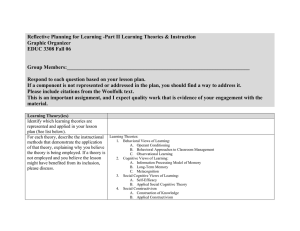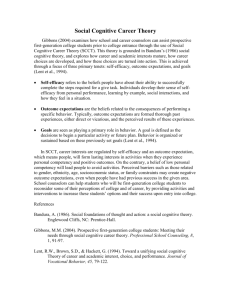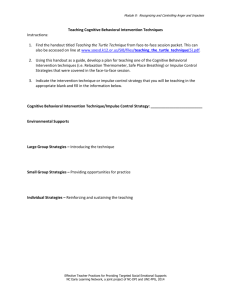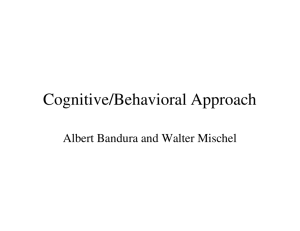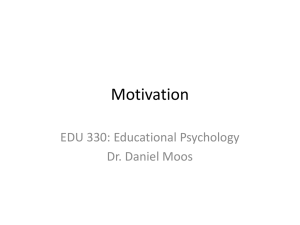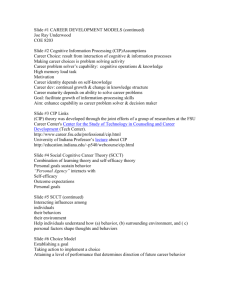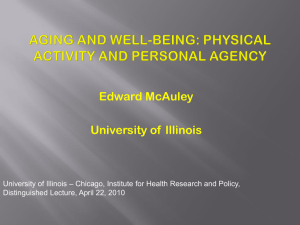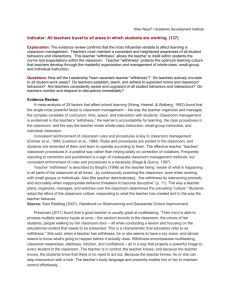UNIT FOUR - Motivation & Management
advertisement
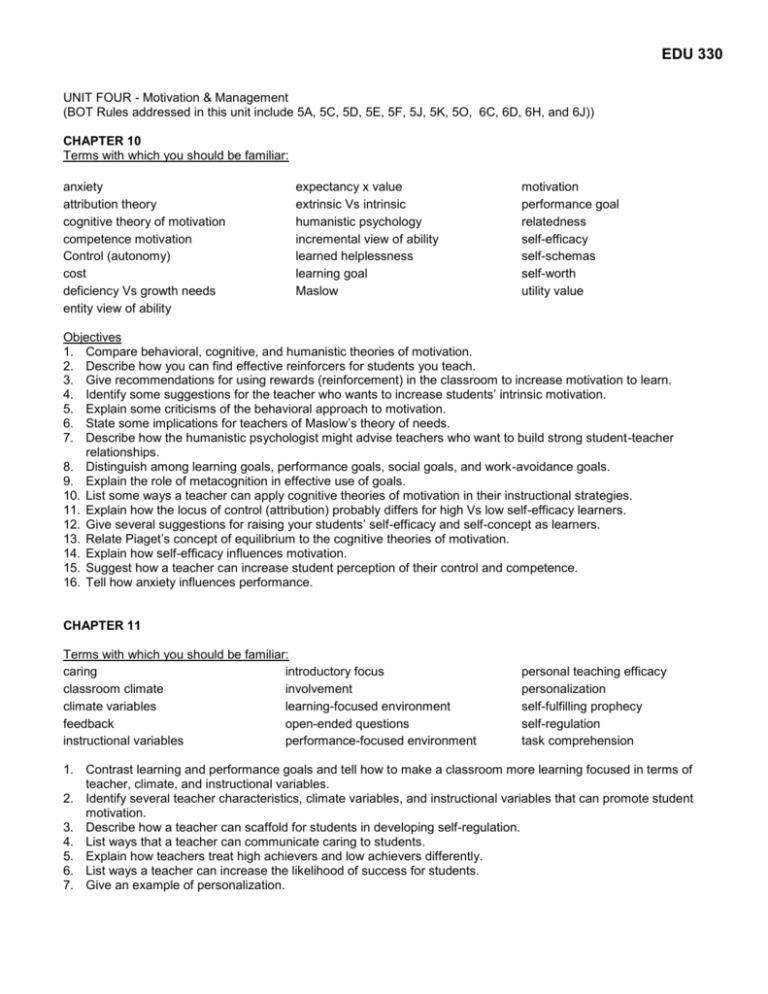
EDU 330 UNIT FOUR - Motivation & Management (BOT Rules addressed in this unit include 5A, 5C, 5D, 5E, 5F, 5J, 5K, 5O, 6C, 6D, 6H, and 6J)) CHAPTER 10 Terms with which you should be familiar: anxiety attribution theory cognitive theory of motivation competence motivation Control (autonomy) cost deficiency Vs growth needs entity view of ability expectancy x value extrinsic Vs intrinsic humanistic psychology incremental view of ability learned helplessness learning goal Maslow motivation performance goal relatedness self-efficacy self-schemas self-worth utility value Objectives 1. Compare behavioral, cognitive, and humanistic theories of motivation. 2. Describe how you can find effective reinforcers for students you teach. 3. Give recommendations for using rewards (reinforcement) in the classroom to increase motivation to learn. 4. Identify some suggestions for the teacher who wants to increase students’ intrinsic motivation. 5. Explain some criticisms of the behavioral approach to motivation. 6. State some implications for teachers of Maslow’s theory of needs. 7. Describe how the humanistic psychologist might advise teachers who want to build strong student-teacher relationships. 8. Distinguish among learning goals, performance goals, social goals, and work-avoidance goals. 9. Explain the role of metacognition in effective use of goals. 10. List some ways a teacher can apply cognitive theories of motivation in their instructional strategies. 11. Explain how the locus of control (attribution) probably differs for high Vs low self-efficacy learners. 12. Give several suggestions for raising your students’ self-efficacy and self-concept as learners. 13. Relate Piaget’s concept of equilibrium to the cognitive theories of motivation. 14. Explain how self-efficacy influences motivation. 15. Suggest how a teacher can increase student perception of their control and competence. 16. Tell how anxiety influences performance. CHAPTER 11 Terms with which you should be familiar: caring introductory focus classroom climate involvement climate variables learning-focused environment feedback open-ended questions instructional variables performance-focused environment personal teaching efficacy personalization self-fulfilling prophecy self-regulation task comprehension 1. Contrast learning and performance goals and tell how to make a classroom more learning focused in terms of teacher, climate, and instructional variables. 2. Identify several teacher characteristics, climate variables, and instructional variables that can promote student motivation. 3. Describe how a teacher can scaffold for students in developing self-regulation. 4. List ways that a teacher can communicate caring to students. 5. Explain how teachers treat high achievers and low achievers differently. 6. List ways a teacher can increase the likelihood of success for students. 7. Give an example of personalization. EDU 330 8. Suggest ways a teacher can increase student involvement. 9. Describe how technology affects motivation. CHAPTER 12 Terms with which you should be familiar: accessibility desist active listening discipline assertive discipline distractibility Canter I Message classroom management intervention cognitive approaches to management intervention continuum consequences logical consequences 1. 2. 3. 4. 5. 6. 7. 8. 9. 10. 11. 12. 13. 14. 15. monitoring overlapping procedures rules verbal-nonverbal congruence visibility withitness Contrast classroom management and discipline. Compare behavioral approaches and cognitive approaches to classroom management. Describe 3 aspects of the physical environment that are important to consider for classroom management. Give advice to a new teacher setting up her procedures and classroom rules. List what research identifies as the benefits of home-school cooperation. Give suggestions for enhancing communication with the home. Identify ways the teacher can improve communication with parents from cultural minorities. Explain Withitness and how it is evident in a teacher. Identify the factors that influence cognitive interventions. Cite several suggestions for preventing classroom problems. Relate research on what a teacher should do at the beginning of the school year to help prevent management problems during the rest of the year. Give several examples of how behavioral principles can be applied to classroom management. Describe and critique the Canter’s Assertive Discipline model. Outline guidelines and suggestions for intervening in the case of classroom management problems. Include the intervention continuum in your discussion. Advise a teacher who is experiencing some serious management problems like violence and aggression in her classroom. OTHER Terms with which you should be familiar: TET I Messages active listening You messages Objectives: 1. Distinguish between “student owned” and “teacher owned” problems. 2. Formulate an active listening response and a complete I Message. 3. State some guidelines on the use of punishment. 4. Explain the basic procedure and appropriate use of applied behavior analysis in individual and group behavior modification programs. 5. Explain the ethical issues involved in the use of behavior analysis strategies.
